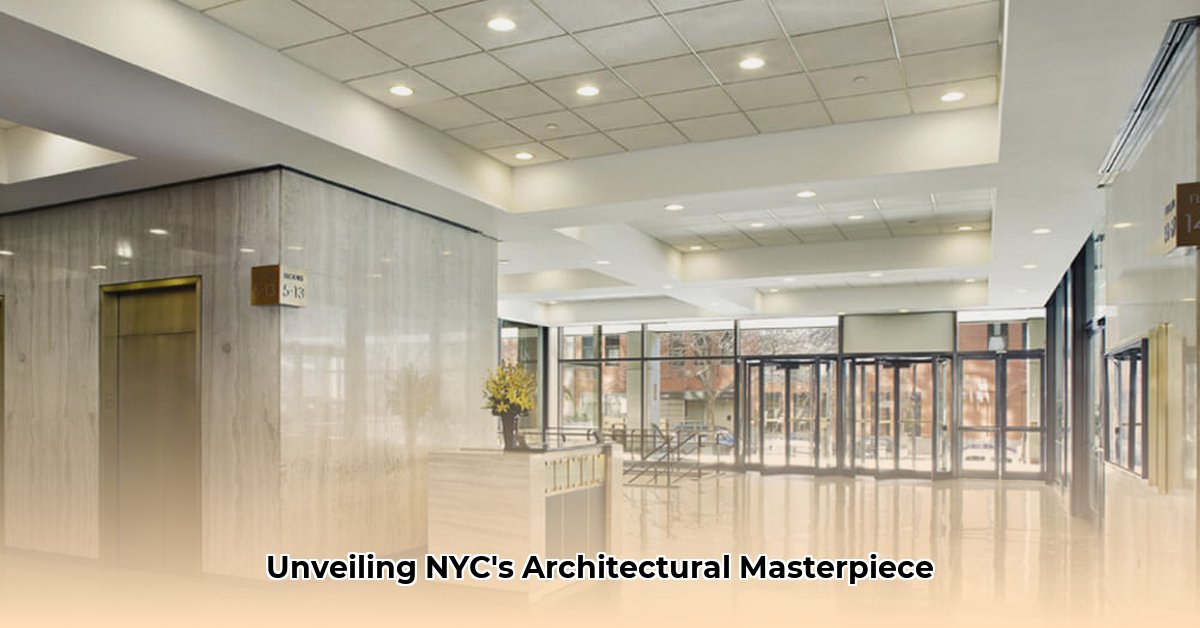
555 West 57th Street: A Manhattan Icon
Imagine a building that seamlessly blends art history, architectural prowess, and shrewd investment potential. That's 555 West 57th Street, a Midtown Manhattan skyscraper that transcends mere functionality. This isn't just another address; it's a statement, a landmark, and a compelling case study in urban development. We'll explore its architectural significance, unparalleled location, and investment appeal, providing a comprehensive overview for those interested in art, architecture, or real estate. For more on smart investment strategies, see investment options.
A Midtown Marvel: Architectural Excellence
555 West 57th Street embodies the spirit of post-World War II modernism. Its clean lines and minimalist design are hallmarks of the International Style (an architectural movement prioritizing function and geometric purity). Think sleek, efficient, and undeniably stylish—a bold statement in the heart of New York City. The building's imposing height and refined details speak to a vision of both elegance and practicality. Isn't it remarkable how a building can so effectively reflect the era of its creation? It's a testament to the architects' foresight and design acumen.
Location, Location, Location: The Ultimate Urban Advantage
The building's location is perhaps its greatest asset. Picture this: you're steps from Central Park, the vibrant Theater District, and world-class museums like MoMA. High-end shopping and Michelin-starred restaurants are literally a stone's throw away. The unparalleled access to public transportation only enhances its appeal. This isn't just a prestigious address; it's a strategic position in the heart of Manhattan's cultural and economic engine. Wouldn't you agree that such proximity significantly elevates the building's value? Living here means being at the pulse of the city, where the energy is palpable.
Investment Potential: A Smart Choice?
555 West 57th Street is undeniably attractive to investors. Its prime location, striking architecture, and solid management combine to create a highly desirable asset. This combination attracts both individuals and major players in the real estate world. However, due diligence is vital. Before investing, consult with financial advisors, analyze current market trends, and carefully assess the inherent risks. While it's an incredibly promising prospect, informed decision-making is crucial. What are the crucial factors to consider before making such a significant investment?
Art, Architecture, and Urban Context
Though not a traditional artwork, 555 West 57th Street exists within a rich cultural landscape. Manhattan's history is interwoven with art and culture, from Impressionism to countless other artistic movements. Its proximity to museums and galleries adds a dimension of cultural significance. This location isn't just about real estate; it's an investment in a location steeped in artistic heritage and vibrant cultural energy. The building stands as a compelling interface between modern architecture and deeply ingrained artistic history.
The Future of 555 West 57th Street
What lies ahead for this iconic building? Manhattan's real estate market is dynamic. 555 West 57th Street's future will likely be influenced by trends such as sustainable development practices and creative repurposing of spaces. However, its strong foundation and unmatched location suggest its continued success for years to come. It's a building constructed to endure.
Stakeholder Interests: A Multifaceted Perspective
| Stakeholder Category | Short-Term Interests | Long-Term Interests |
|---|---|---|
| Real Estate Investors | High rental income, capital appreciation | Stable, long-term returns, potential for property value growth |
| Building Management | Maintaining high occupancy, efficient operations | Preserving asset value, attracting premium tenants, implementing sustainable practices |
| City Planners/Local Government | Supporting sustainable urban development | Enhancing the neighborhood, improving the local economy |
Leveraging Historical Context in Modern Manhattan Development
Key Insights:
- Understanding Manhattan's architectural history informs design decisions and marketing strategies.
- Respecting historical context enhances a development's appeal and market value.
- Analyzing past development trends provides valuable insights for future projects.
- Integrating historical elements creates unique selling points, attracting specific tenants.
- Compliance with zoning laws and preservation regulations is essential.
555 West 57th Street serves as a compelling example of how to successfully integrate historical context into modern development. Its design, while contemporary, subtly engages with the neighborhood's past. How can developers effectively achieve this delicate balance between modern and historic?
Beyond Steel and Glass: The Power of Place
A building’s success hinges on more than its physical attributes; its context is crucial. Manhattan’s rich architectural history—from brownstones to Art Deco structures—cannot be ignored. A development that respects and engages with this context adds immeasurably to its value and appeal. 555 West 57th demonstrates this masterfully.
Researching the Past: Laying a Solid Foundation
Comprehensive historical research is paramount. Understanding a site's history, previous occupants, and neighborhood evolution informs design choices. This understanding provides opportunities to subtly integrate elements of the past into the present, creating a unique narrative. The resulting project is richer and resonates more deeply with its surroundings.
Incorporating Historical Elements: A Subtle Art
This isn’t about imitation. The goal is to draw inspiration and to integrate elements that subtly echo the neighborhood's character. 555 West 57th showcases this approach brilliantly.
Navigating Regulations: A Collaborative Approach
Manhattan has strict historic preservation laws. Developers must navigate these regulations, but these restrictions can be viewed as a framework for creative solutions. Collaboration between architects, historians, and city officials is essential.
Marketing the Legacy: Storytelling for Success
A building’s history becomes a powerful marketing tool. Highlighting its context and relationship to the city’s past enhances its desirability and justifies a higher price point. 555 West 57th’s success is a testament to this strategy.
555 West 57th Street is more than a building; it’s a vibrant intersection of art, architecture, investment, and the enduring spirit of Manhattan. It's a story that continues to unfold.